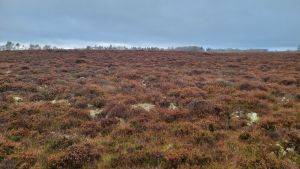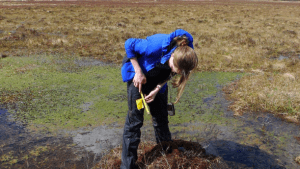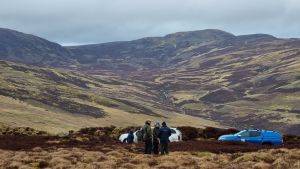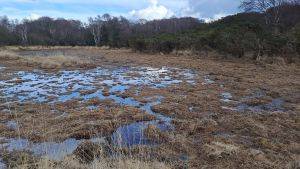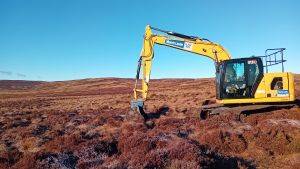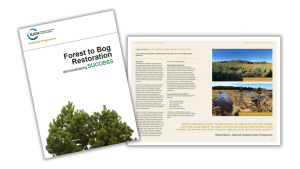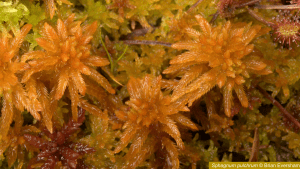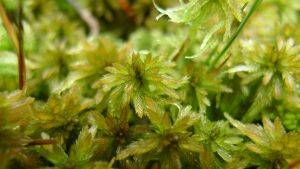• £10 million of government grants awarded for work on peatlands
• Area the size of 10,000 football pitches to be restored to peat forming condition
• Restored peatlands will continue to store carbon, improve water quality in rivers and reduce flood risk
A new injection of £10m of government money will help restore more than 10,000 football pitches-worth of England’s iconic peatlands.
Peat bogs and fens are important habitats that provide food and shelter for wildlife, help with flood management, improve water quality and play a part in climate regulation.
The total area of 6,580 hectares of upland and lowland peatlands that these grants will support work on is equivalent to 10,613 football pitches. The work will be delivered through four local partnership projects and will reduce greenhouse gas emissions making their way into the atmosphere by creating a natural store for carbon.
This vital work will abate and store estimate 23,000 tonnes of carbon per year contributing to the UK’s climate change goals.
A panel of experts and Defra officials assessed the projects and awarded the funding based on the potential for carbon abatement.
Environment Minister Thérèse Coffey said:
“Peatlands are an iconic aspect of the English landscape which are not only a haven for wildlife but also provide us with clean water and help reduce greenhouse gas emissions.
“The 25 Year Environment Plan sets out the Government’s commitment to improve peatlands and grant schemes such as this one will enable us to leave our environment better than we inherited it.”
Defra has allocated a total of £10 million between the four projects.
The north of England peat partnership led by the Yorkshire Wildlife Trust will restore 394 ha of lowland raised bog and 1679 ha of blanket bog across 21 peatland sites in the north of England.
Dr Tim Thom, Peat Programme Manager at Yorkshire Wildlife Trust, which co-ordinated the bid, said:
“It’s fantastic to see peatlands on the Government’s agenda and getting the recognition they deserve – both in terms the benefits they bring and the parlous condition we have let so many of them reach. I’m thrilled that our bid has been successful and I know I speak for all of our partners when I say I cannot wait to get started.
“This funding will enable us to restore some of the most important and beautiful sites across the north of England – from England’s largest lowland raised bog in South Yorkshire all the way up to Northumberland’s highest point near the Scottish border – over 2,000 hectares of peatland will be repaired, locking up carbon, filtering our drinking water, managing flooding and providing habitat for some fascinating species.”
The South West Peatlands Bid led by South West Water will be delivered through local partnerships.
The focus is on 1680 ha of upland peat across Bodmin Moor, Dartmoor and Exmoor. To date very little of the peatland on Dartmoor and Bodmin Moor has been restored. Exmoor has had over 1900ha of restoration to date.
Morag Angus, Exmoor Mires Partnership Manager said:
“This peatland grant from Defra presents a real opportunity to make a significant difference to deliver peatland restoration across Bodmin Moor, Dartmoor and Exmoor.
“The peatlands of south-west England are very important for water quality, carbon storage, biodiversity, cultural history, recreation and farming but they are the most vulnerable in the UK to the impacts of climate change, due to their southerly position. Working with our partners in these three moors enables these nationally and internationally important habitats to be restored for the benefit of all and future generations.”
Meres & Mosses Carbon Capture Project led by Shropshire Wildlife Trust aims to restore a mix of nine lowland and upland peatland sites covering 98 ha across the Meres & Mosses Natural Area.
John Hughes, Development Manager, Shropshire Wildlife Trust said:
“The Mosses of Shropshire, Cheshire and Staffordshire are one of the least known, but most ecologically important, suites of peatbogs. Our partnership is delighted that this Defra funding will allow us to carry out even more work in our mission to restore them to favourable condition.”
Moor Carbon, led by the Peak District National Park Authority, will be working in the Peak District National Park, West Pennine Moors SSSI, and Rossendale Gap to restore over 2,000 hectares of blanket bog.
Chief Executive, Sarah Fowler, said:
“We are delighted to have been awarded this funding from Defra; helping to achieve an early win for Defra’s 25 year environment plan. The project will deliver vital conservation work on more than 2,100 hectares of blanket bog in the UK’s original National Park. The work will help to reduce over 4,500 tonnes of carbon dioxide loss into the atmosphere every year. We are proud to play a role in helping to achieve the Government's aspiring climate change targets.
“As well as carbon storage, this innovative partnership project will provide a wealth of benefits to both people and animals. Work will help to improve the quality of the water that we consume; and enhance the precious home of rare birds and mammals. Bare peat re-vegetation and blocking eroded gullies on the moors will help to slow the flow of water when it rains; reducing the threat of flooding in local at-risk communities. The Partnership has a proven track-record of undertaking moorland conservation projects on such a large scale. We work together to help care for these stunning wild spaces that mean so much to so many people; and to ensure that they are protected for generations to come.”

